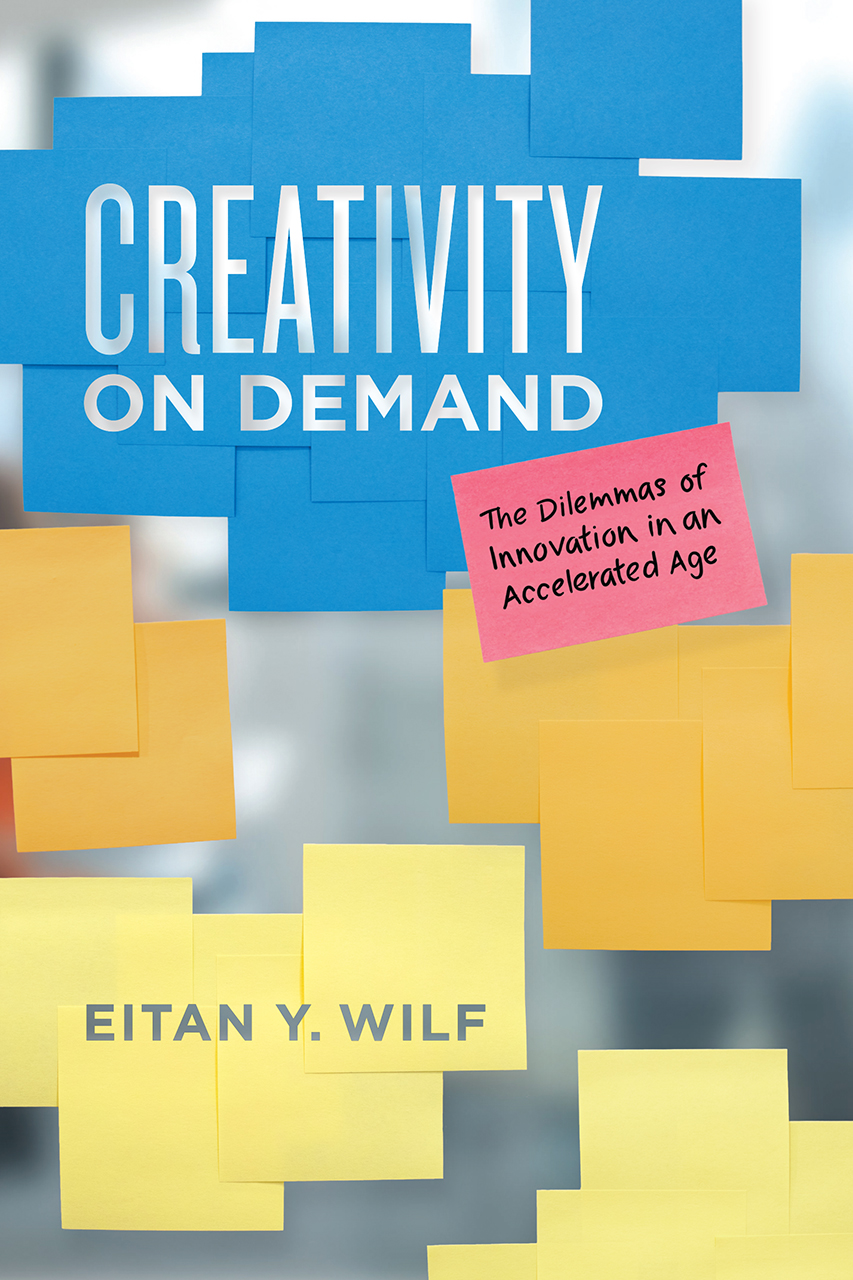5 Questions for Eitan Y. Wilf, author of ‘Creativity on Demand’
In his new book—Creativity on Demand: The Dilemmas of Innovation in an Accelerated Age—cultural anthropologist Eitan Y. Wilf focuses his keen eye on innovation in modern business, revealing how our obsession with ceaseless creativity stems from the long-standing value of acceleration in capitalist society. A masterful look at the contradictions of our capitalist age, this book is a model for the anthropological study of our cultures of work.

We sent Wilf a few questions recently to learn more about his motivations for writing the book, his recent reads, and his former life as a jazz trumpeter.
What’s the best book you’ve read lately?
I just finished reading George Orwell’s Down and Out in Paris and London. His prose is marvelous and his descriptions of, as well as insights about, poverty are ethnographic in the best sense of the term.
How did you wind up in this academic field, and what do you love about it?
Before studying anthropology, I majored in jazz performance as a trumpeter. Jazz is one of my biggest passions. I enjoyed music school very much but I also missed having a stronger theoretical-discursive focus. For the same reason, although I seriously considered fields such as medicine, physics, and civil engineering, I eventually decided to go in the direction of anthropology, which seemed to me at the time (as it still does today) to offer a nice balance between humanistic theory and concrete engagement with the world of humans. Anthropology has also offered me the perfect way to reconcile my different interests, in that for my doctoral dissertation at the University of Chicago I wrote an ethnography of two academic jazz music programs in the United States.
Of all the books you could have written, why did you decide to write Creativity on Demand?
One of my main goals in writing my previous book, School for Cool: The Academic Jazz Program and the Paradox of Institutionalized Creativity, was to argue that the academic jazz program is only one manifestation of the broader phenomenon of institutionalized creativity. I ended the book by arguing that another contemporary manifestation of this phenomenon is the fact that many business innovation consultants have turned to jazz music in search for organizational models that can foster creativity in business firms. Writing Creativity on Demand was thus the natural next step for me after I finished writing my previous book.
Where do you usually write? What is your work space like?
I almost always write at home. I have never been able to write in my office for different reasons. Writing at home has its blessings and curses. The temptations to stop writing are always lurking, and the lack of spatial separation between the spheres of work and non-work can be problematic. However, there is something humanizing about writing at home, if only because I can always take my trumpet and play whenever I feel tired of writing.
Any recent or forthcoming books from UCP that you are excited about?
I look forward to reading Life by Algorithms: How Roboprocesses are Remaking Our World (eds. Besteman and Gusterson). This edited volume brings together a number of excellent anthropologists who study the growing impact of computerized algorithms on our lives. I have for long been interested in studying efforts to develop art-producing computerized algorithms in the United States. I consider this volume a welcome contribution to an important emerging field.
Creativity on Demand: The Dilemmas of Innovation in an Accelerated Age is available now! To learn more or buy a copy, visit the book’s page on our site or visit your local bookstore. You can also check out the author’s website for more info about his work.